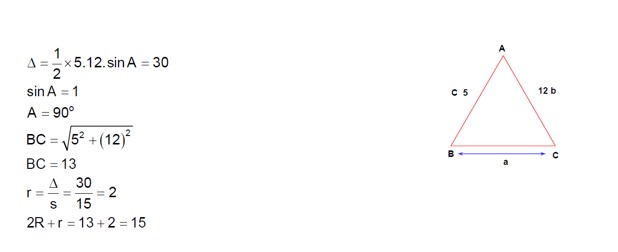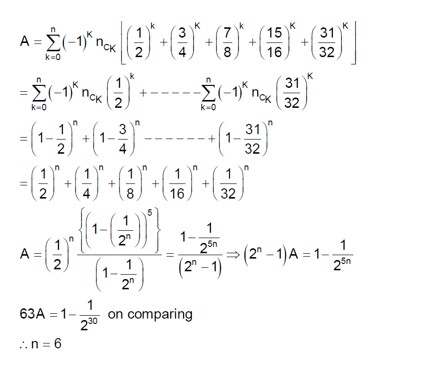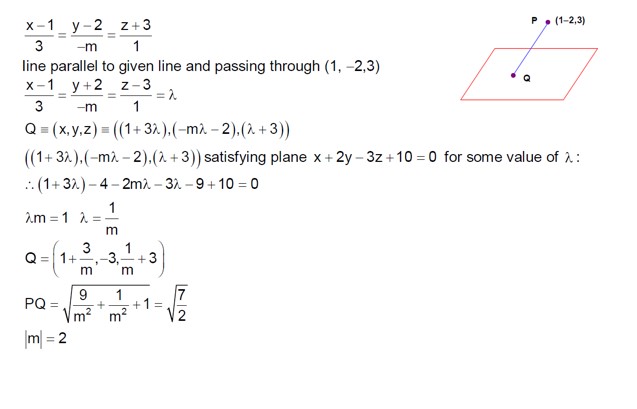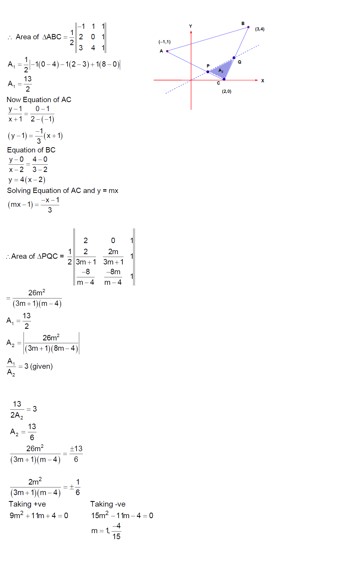Maths
Get insights from 6.5k questions on Maths, answered by students, alumni, and experts. You may also ask and answer any question you like about Maths
Follow Ask QuestionQuestions
Discussions
Active Users
Followers
New answer posted
2 months agoContributor-Level 10
1/16, a, b are in GP. So, a² = b/16 .
Also, a, b, 1/6 are in AP. So, 2b = a + 1/6.
From the first equation, b = 16a².
Substitute into the second: 2 (16a²) = a + 1/6 => 32a² - a - 1/6 = 0.
192a² - 6a - 1 = 0.
The solution appears to solve a different problem.
New answer posted
2 months agoContributor-Level 10
[a? ] = [ 1 ] [-1 b? ]
[a? ] [√3 k] [ k b? ] (This is likely incorrect OCR, should be a 2x1 result)
The solution seems to derive from a matrix multiplication:
[√3a? ] = [ 1 ] [b? ]
[√3a? ] [√3 k] [b? ]
This leads to:
b? - b? = √3a?
b? + kb? = √3a?
Also given: a? ² + a? ² = (2/3) (b? ² + b? ²).
Squaring and adding the two derived equations and comparing with the given condition leads to k=1.
New answer posted
2 months agoContributor-Level 10
The integral is I = ∫ [ (x²-1) + tan? ¹ (x + 1/x)] / [ (x? +3x²+1)tan? ¹ (x+1/x)] dx
This is a complex integral. The provided solution splits it into two parts:
I? = ∫ (x²-1) / [ (x? +3x²+1)tan? ¹ (x+1/x)] dx
I? = ∫ 1 / (x? +3x²+1) dx
The solution proceeds with substitutions which are hard to follow due to OCR quality, but it seems to compare the final result with a given form to find coefficients α, β, γ, δ. The final expression shown is:
10 (α + βγ + δ) = 10 (1 + (1/2√5)*√5 + 1/2) seems incorrect.
The calculation is shown as 10 (1 + 1/10 - 1/2) = 10 (11/10 - 5/10) = 10 (6/10) = 6.
New answer posted
2 months agoContributor-Level 10
S? (x) = log? ¹? ²x + log? ¹? ³x + .
This is incorrect; the bases are numbers, not powers of 'a'. Let's assume the bases are 1/2, 1/3, 1/6, 1/11, .
The series is S' = 2, 3, 6, 11, 18, .
The differences are 1, 3, 5, 7, . which is an AP.
The n-th term t? is a quadratic in n.
t? = An² + Bn + C.
t? =A+B+C=2
t? =4A+2B+C=3
t? =9A+3B+C=6
Solving these, we get 3A+B=1 and 5A+B=3, which gives 2A=2, A=1. Then B=-2, C=3.
t? = n² - 2n + 3 = (n-1)² + 2.
The solution confirms this finding t? = 2 + (n-1)².
New answer posted
2 months agoContributor-Level 10
The point of intersection of the ellipse x²/16 + y²/b² = 1 and the curve y² = 3x² lies on both.
Substitute y² = 3x² into the ellipse equation:
x²/16 + 3x²/b² = 1
x² (1/16 + 3/b²) = 1
x² (b² + 48) / 16b² = 1
x² = 16b² / (b² + 48).
For a solution to exist, we need x² > 0, which is true if b≠0.
The problem seems to have a condition missing or misinterpreted in the OCR. The provided solution also shows x² + y² = 4b, which might be another curve involved. Assuming the point lies on x²+y²=4b.
x² + 3x² = 4b => 4x² = 4b => x² = b.
Substitute x²=b into the ellipse equation: b/16 + 3b/b² = 1 (assuming y²=3b).
b/16 + 3/b = 1
New answer posted
2 months agoContributor-Level 10
Given r x a = b x r, which means r x a + r x b = 0, so r x (a+b) = 0.
This implies r is parallel to (a+b). So, r = λ (a+b).
a = I + 2j - 3k, b = 2i - 3j + 5k
a+b = 3i - j + 2k.
r = λ (3i - j + 2k).
Given r ⋅ (αi + 2j + k) = 3. The OCR is unclear, but the equation appears to be r ⋅ (αi + 2j + k) = 3. The solution works with r ⋅ (αi + 2j + k) = 3, but theOCR says r. (ai+2j+k). Let's assume it's α.
λ (3i - j + 2k) ⋅ (αi + 2j + k) = 3
λ (3α - 2 + 2) = 3 => λα = 1.
Given r ⋅ (2i + 5j - αk) = -1.
λ (3i - j + 2k) ⋅ (2i + 5j - αk) = -1
λ (6 - 5 - 2α) = -1 => λ (1 - 2α) = -1.
From λα = 1, α = 1/λ.
λ (1 - 2/λ) = -1 => λ
Taking an Exam? Selecting a College?
Get authentic answers from experts, students and alumni that you won't find anywhere else
Sign Up on ShikshaOn Shiksha, get access to
- 65k Colleges
- 1.2k Exams
- 679k Reviews
- 1800k Answers




